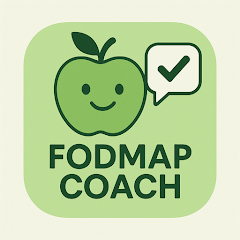Understanding the FODMAP Elimination Diet
.webp)
The FODMAP elimination diet is the first and most crucial phase of the low FODMAP diet protocol. During this phase, you'll temporarily eliminate all high-FODMAP foods from your diet for 2-6 weeks to allow your digestive system to calm down and establish a symptom baseline.
This systematic approach, developed by researchers at Monash University, has been clinically proven to reduce IBS symptoms in approximately 75% of people. The elimination phase isn't meant to be permanent – it's a diagnostic tool that prepares you for the crucial FODMAP reintroduction phase.
Success during the elimination phase requires careful planning, thorough understanding of FODMAP foods, and consistent tracking of your symptoms and dietary intake. This comprehensive guide provides everything you need to navigate this phase successfully and set the foundation for long-term digestive health.
What to Eat During FODMAP Elimination
The FODMAP elimination diet focuses on foods that are naturally low in fermentable carbohydrates. Here's your comprehensive list of safe foods:
Proteins (Unlimited)
- All fresh meats (beef, pork, lamb, poultry)
- Fresh and canned fish and seafood
- Eggs (all preparations)
- Tofu (firm, extra-firm)
- Tempeh (small amounts)
Vegetables (Portion-Controlled)
- Carrots, parsnips, sweet potatoes
- Spinach, kale, lettuce, arugula
- Bell peppers, zucchini, eggplant
- Tomatoes, cucumbers, radishes
- Green beans, bok choy, bamboo shoots
- Potatoes (white and red)
Fruits (Specific Portions)
- Bananas (1/2 medium), oranges (1 medium)
- Strawberries (1/4 cup), blueberries (1/4 cup)
- Grapes (1/2 cup), kiwi (1 medium)
- Pineapple (1/2 cup), cantaloupe (1/2 cup)
- Lemons and limes (unlimited for flavoring)
Grains and Starches
- Rice (all varieties), quinoa, oats
- Gluten-free bread and pasta
- Rice cakes, corn tortillas
- Potatoes in all forms
Foods to Avoid During Elimination
These high-FODMAP foods must be completely eliminated during the first phase:
High-FODMAP Vegetables
- Onions, garlic, leeks, shallots
- Asparagus, artichokes, cauliflower
- Mushrooms, sugar snap peas
- Beets, Brussels sprouts (large amounts)
High-FODMAP Fruits
- Apples, pears, stone fruits
- Watermelon, mangoes, cherries
- Dried fruits, fruit juices
Dairy and Alternatives
- Regular milk, yogurt, ice cream
- Soft cheeses, cottage cheese
- Soy milk (unless made from soy protein)
Grains and Legumes
- Wheat, rye, barley
- Beans, lentils, chickpeas
- Cashews, pistachios (large amounts)
7-Day FODMAP Elimination Meal Plan
Here's a sample week of meals to get you started on your elimination diet:
Day 1
- Breakfast: Oatmeal with strawberries and lactose-free milk
- Lunch: Grilled chicken salad with mixed greens and olive oil dressing
- Dinner: Baked salmon with roasted carrots and quinoa
- Snacks: Rice cakes with almond butter, banana
Day 2
- Breakfast: Scrambled eggs with spinach and gluten-free toast
- Lunch: Turkey and lettuce wrap with cucumber
- Dinner: Stir-fried tofu with bok choy and rice
- Snacks: Orange slices, handful of walnuts
Continue this pattern, focusing on simple preparations and safe ingredients. For complete meal plans and shopping lists, consider using the FODMAP Coach AI app for personalized planning.
Timeline and Expectations
Week 1-2: Adjustment Period
The first two weeks can be challenging as you adjust to new foods and meal planning. You may experience:
- Initial confusion about food choices
- Meal planning difficulties
- Possible temporary digestive changes
- Social eating challenges
Week 3-4: Symptom Improvement
Most people begin experiencing significant symptom relief during this period:
- Reduced bloating and gas
- Improved bowel movement regularity
- Less abdominal pain
- Increased energy levels
Week 5-6: Stabilization
Symptoms should be stable and significantly improved. This is when you'll prepare for the reintroduction phase.
Success Strategies for Elimination
Meal Planning and Prep
Success requires organization and preparation:
- Plan meals weekly using a FODMAP shopping list
- Batch cook proteins and grains
- Prepare low FODMAP snacks in advance
- Keep emergency meals on hand
Tracking and Monitoring
Use an IBS symptom tracker to monitor your progress:
- Record all foods and portion sizes
- Track symptoms daily
- Note energy levels and mood
- Monitor bowel movement patterns
